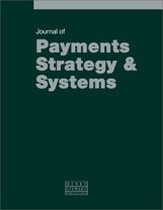Scaling mobile money
Abstract
Retail payment systems require scale to get off the ground and struggle to grow incrementally. This is due to three factors: (i) Network effects: when it comes to payment systems, the value of joining a network is directly proportional to the number of people already on it; (ii) Chicken-and-egg trap: in order to grow, these systems must aggressively attract both customers and cash-in/cash-out merchants in tandem, otherwise, merchants will stop offering the service due to low transaction revenue and customers will not join the system because they cannot access a convenient outlet; (iii) Trust: customers have to become comfortable going to non-bank retail outlets to meet their cash-in/out needs and initiating transactions through their mobile phones. Until a deployment serves a large number of customers, people will lack trust in the new system, because they know few who can vouch for it. To overcome these barriers, mobile money deployments need to reach a critical mass of customers as quickly as possible, lest they get stuck in the ‘sub-scale trap’. To do this, they need to get three things right. First, they must create enough urgency in customers’ minds to learn about, try and use the service. Second, they must invest heavily in above and below the line marketing to establish top of mind awareness of (and trust in) the service among a large segment of the population. And, third, they must incur considerable customer acquisition costs (beyond marketing and promotion) to ensure that their cash-in/out merchants are adequately incentivised to promote the service. Many deployments around the world have potential to scale, but are stuck in the ‘sub-scale trap’, because their promoters either underestimate the investments needed to achieve scale or are reluctant to make these investments because they can point to only one major success — M-PESA in Kenya.
The full article is available to subscribers to the journal.
